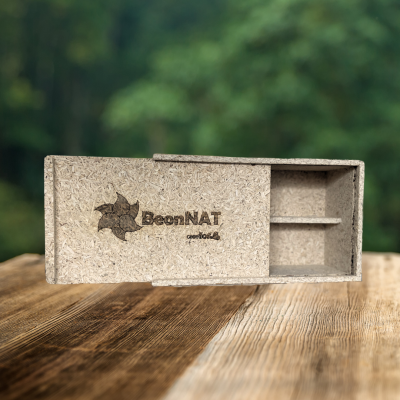
A CBE JU-funded project identifies six tree and shrub species that show promise as cultivated biomass used in the manufacture of bio-based products.
Since its launch in July 2020, the CBE JU-funded BeonNAT project has been exploring the production of biodegradable bio-based products and bioactive compounds that could help replace fossil-based products. To do this, it proposed the use of trees and shrubs grown on marginal lands in Europe as a source of biomass for the production of eight products based on new bio-based value chains. So far, BeonNAT has succeeded in demonstrating the potential of forest biomass cultivated to produce bioplastics used for bioactive cosmetics, biochar, activated carbon and pet litter with essential oils.
The tree and shrub species assessed for their suitability in the manufacture of these end products include Siberian elm, common juniper, hoary rock-rose, rosemary, birch, common broom, blackwood acacia, mora, common hornbeam and black poplar. The species were grown at six locations in Germany, Spain and Romania.
In Spain, the trees were planted on marginal former agricultural land in Velefique (province of Almeria) and on underutilised marginal forest land covered by grasslands with sparse woody vegetation in Lubia (province of Soria). The Soria site is managed by BeonNAT project coordinator Centro de Investigaciones Energéticas, Medioambientales y Tecnológicas (CIEMAT) and is an area under sustainable forest management.
The German case studies are located in the reclaimed part of the Welzow-South open-pit lignite mine in the state of Brandenburg and in the marginal forest land in Kromlau in the state of Saxony. In Romania, the trees were grown on former agricultural land in Zamostea and Moara.
Promising results
As reported in a ‘Nutraceutical Business Review’ news item, six of the most promising species from among the previously mentioned trees and shrubs have been deemed suitable for use in the manufacture of bioplastics, biochar, activated carbon and pet litter. For example, two species identified as showing promise for the production of lactic acid used in the manufacture of bioplastics for bioactive cosmetics are black poplar from Zamostea and acacia from Moara.
The news item reports further findings: 'Siberian elm was tested with good results for producing commercial activated carbon and biochar. For this end product, common juniper also shows promising results. So far, birch, rosemary and Siberian elm have shown the best results for producing pet litter made with essential oils. The first particle board tests have also been completed. Particle board with low formaldehyde emissions were obtained from all species, and some boards (especially from certain tree species) showed good mechanical properties.'
BeonNAT researchers carried out kraft pulping tests, where wood chips are digested at high temperatures and pressure in a mixture known as white liquor in a process used to convert wood into wood pulp. These tests, conducted on all the species, revealed poor results for the pulp produced from juniper, rosemary and mora. However, other species did show good properties: 'The common broom shrub species performed surprisingly well for both particle board and pulp,' the news item explains. 'In addition, tests are currently being done on the species’ bioactive potential.'
The next phase of BeonNAT involves a second production test using bio-based products and the assessment of the raw materials produced by the selected species for the scale-up process. The project ends in June 2025.
